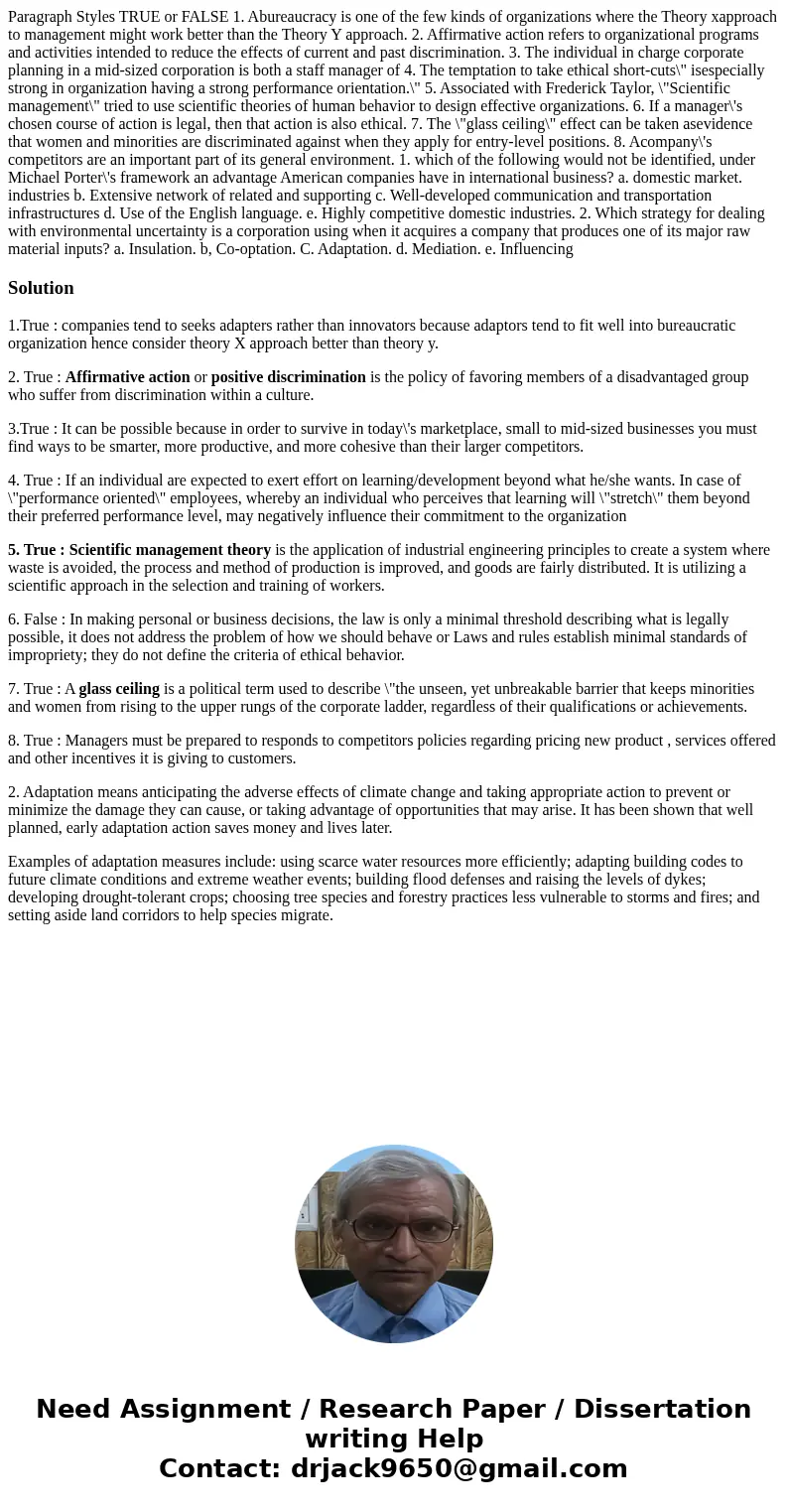Paragraph Styles TRUE or FALSE 1 Abureaucracy is one of the
Solution
1.True : companies tend to seeks adapters rather than innovators because adaptors tend to fit well into bureaucratic organization hence consider theory X approach better than theory y.
2. True : Affirmative action or positive discrimination is the policy of favoring members of a disadvantaged group who suffer from discrimination within a culture.
3.True : It can be possible because in order to survive in today\'s marketplace, small to mid-sized businesses you must find ways to be smarter, more productive, and more cohesive than their larger competitors.
4. True : If an individual are expected to exert effort on learning/development beyond what he/she wants. In case of \"performance oriented\" employees, whereby an individual who perceives that learning will \"stretch\" them beyond their preferred performance level, may negatively influence their commitment to the organization
5. True : Scientific management theory is the application of industrial engineering principles to create a system where waste is avoided, the process and method of production is improved, and goods are fairly distributed. It is utilizing a scientific approach in the selection and training of workers.
6. False : In making personal or business decisions, the law is only a minimal threshold describing what is legally possible, it does not address the problem of how we should behave or Laws and rules establish minimal standards of impropriety; they do not define the criteria of ethical behavior.
7. True : A glass ceiling is a political term used to describe \"the unseen, yet unbreakable barrier that keeps minorities and women from rising to the upper rungs of the corporate ladder, regardless of their qualifications or achievements.
8. True : Managers must be prepared to responds to competitors policies regarding pricing new product , services offered and other incentives it is giving to customers.
2. Adaptation means anticipating the adverse effects of climate change and taking appropriate action to prevent or minimize the damage they can cause, or taking advantage of opportunities that may arise. It has been shown that well planned, early adaptation action saves money and lives later.
Examples of adaptation measures include: using scarce water resources more efficiently; adapting building codes to future climate conditions and extreme weather events; building flood defenses and raising the levels of dykes; developing drought-tolerant crops; choosing tree species and forestry practices less vulnerable to storms and fires; and setting aside land corridors to help species migrate.

 Homework Sourse
Homework Sourse